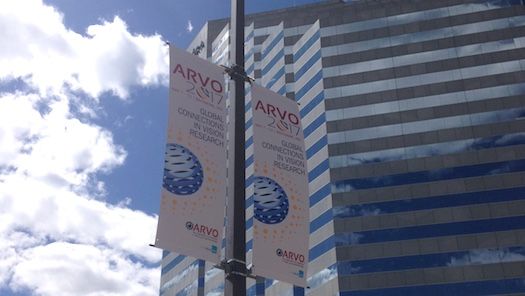Many With Diabetic Retinopathy Going Unscreened, Undiagnosed
The condition disproportionately affects minorities and the poor.

Diabetic retinopathy is not just a big health problem — it’s a big socioeconomic and racial problem too, according to Anne Langguth, MD, Northwestern University.
In the US, 29 million people have diabetes. Nearly 8 million of those have diabetic retinopathy — a condition where diabetes causes damage to the eye's retina that could eventually lead to blindness.
“Multiple studies have shown that non-Hispanic blacks and Mexican Americans have a higher prevalence of diabetic retinopathy,” Langguth said in a presentation at the annual meeting of the Association for Research in Vision and Ophthalmology (ARVO) in Baltimore, MD. “There have also been studies demonstrating that those in the lowest income levels, compared to those in higher income levels, have higher rates of diabetic retinopathy.”
Length’s research groups wondered if they could identify a difference in the prevalence of diabetes and diabetic retinopathy by zip code in Chicagoland — a socioeconomically and racially diverse area in the state of Illinois that includes Chicago and its suburbs, and is home to about 9.4 million people.
To find out, researchers relied on the Health link database, a collaboration of several healthcare providers in Chicago that includes private, county and state hospitals and includes data on 2.4 million patients from 2006 to 2012. Of those 2.4 million people, Langguth and her team limited the study to 1.1 million adults who lived in Chicagoland, received care in Chicagoland, and had more than two visits in a three-year period.
Researchers analyzed the data by zip code, and found several areas with high relative risk of diabetes, high relative risk of diabetic retinopathy, but low diagnoses of the conditions. These included 36 of Chicagoland’s zip codes and 1.2 million people.
“When we look at the percent minority in this group, it’s nearly 85%, which is significantly higher than the percent minority in Chicagoland on average,” Langguth said. “Then, when we look at the percentage of households in this group below the federal poverty level, it’s about 33%. Again, this is much higher than the Chicagoland average of 17%.”
When researchers mapped this information out, they found that higher poverty areas tended to correspond with the same zip codes that had higher relative rates of diabetes and diabetic retinopathy.
According to Langguth, this shows that a disparity exists between Chicagoland zip codes in regards to relative levels of diabetes, relative levels of diabetic retinopathy, and the likelihood to be appropriately diagnosed.
“Knowing the location of the high-risk zip codes can help us more appropriately allocate limited screening resources,” she said. “We postulate that because at a neighborhood zip code level, you can really determine that there’s an under diagnosis and need for approved screening, you could potentially enhance screening capacity in those areas and make a very significant difference at a neighborhood level.”
The study’s limitations included the fact that not all diabetic and diabetic retinopathy patients were included in the Healthlink database, and inappropriately coded patients would not be included.